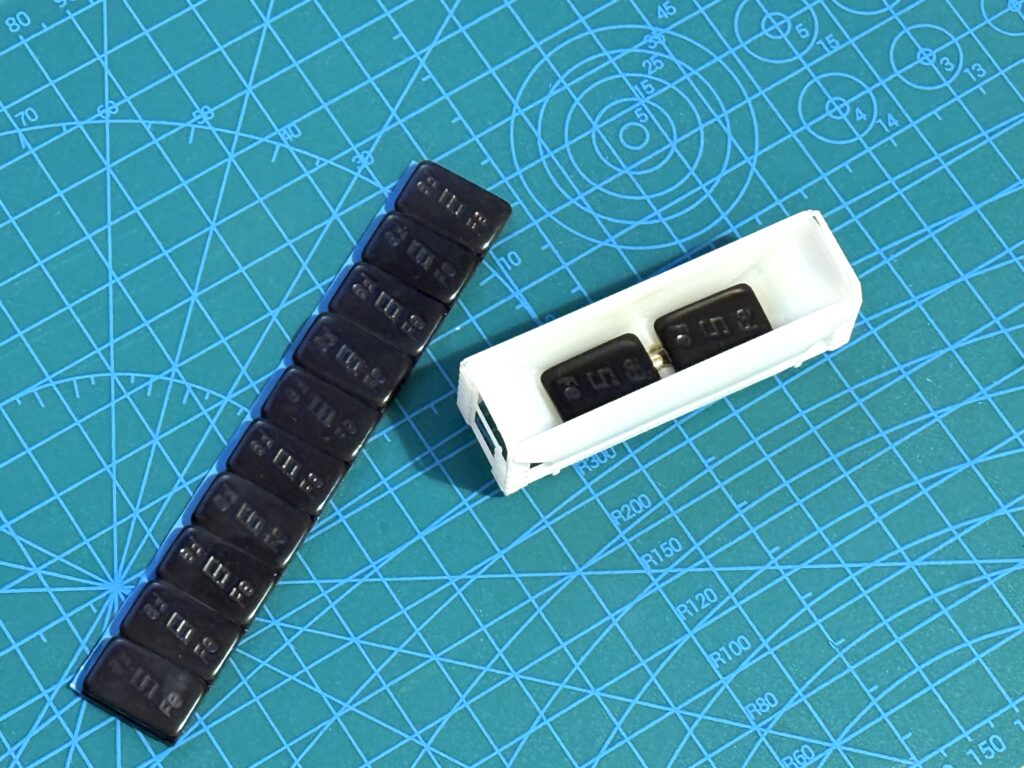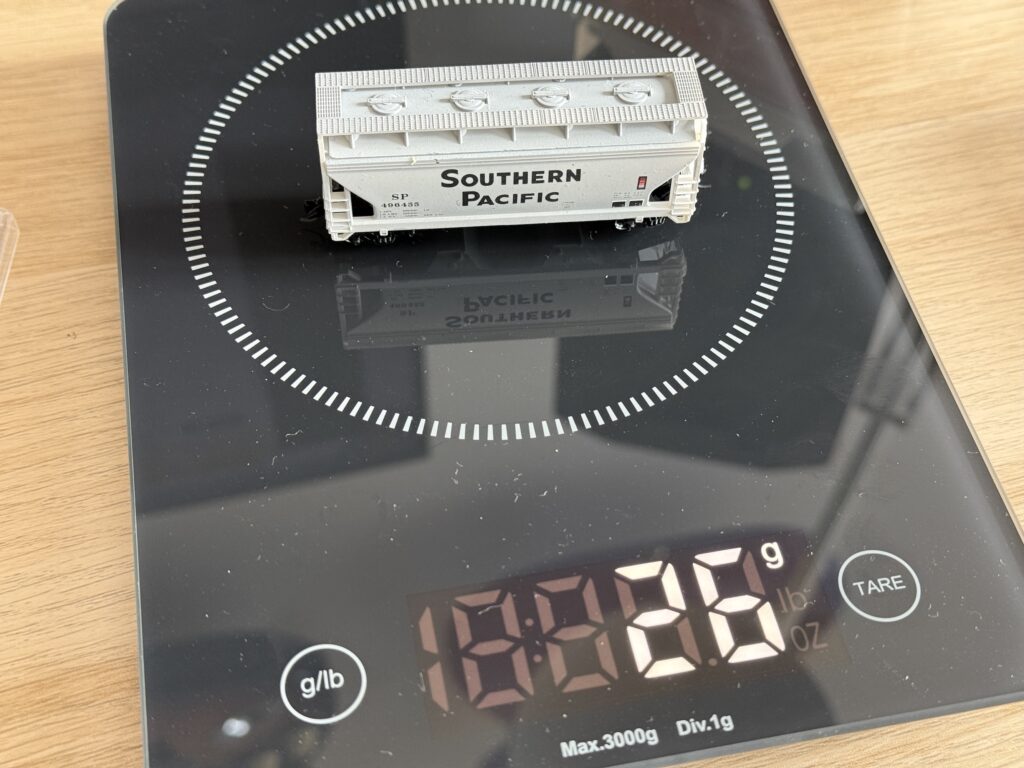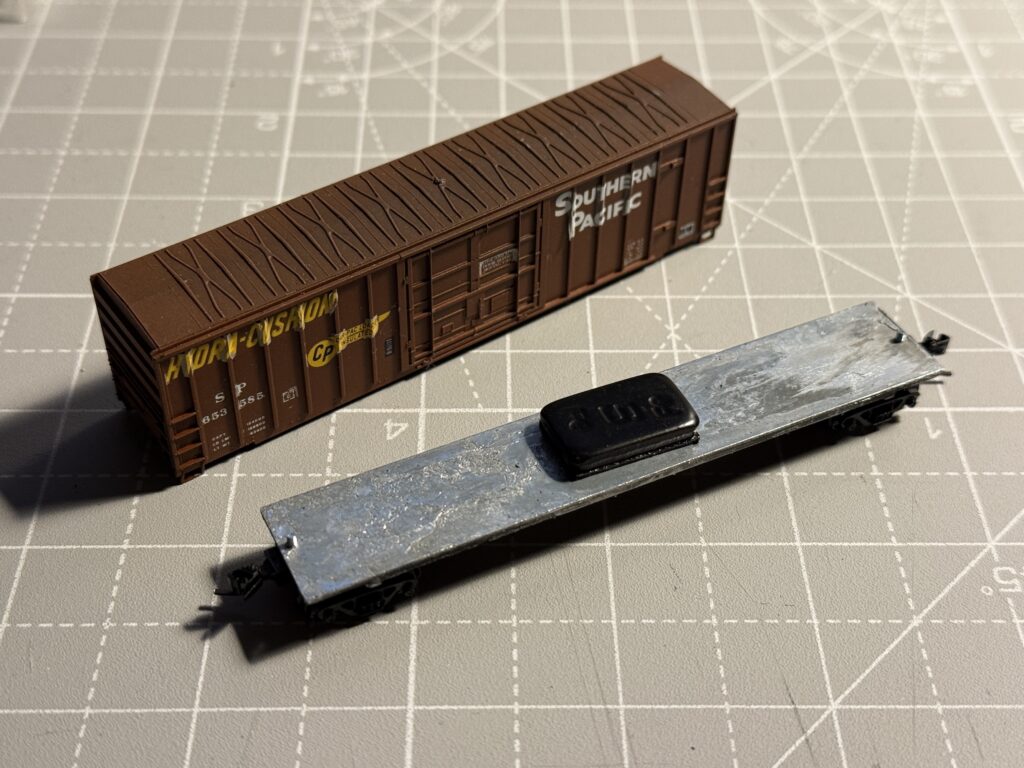How much should model railroad cars weigh? Let’s explore NMRA Recommended Practice 20
A proper model railroad cars weight plays a key role in ensuring smooth operations, especially on tight curves and uneven track sections where some cars may derail. Also, properly weighted cars significantly improve realistic operations, especially when it comes to coupling and uncoupling.

The ideal weight for each car depends on its length. Using NMRA standards, particularly RP-20, you can calculate the optimal weight for any car and adjust it if needed by adding extra weight.
How to calculate weight
Here’s the formula for determining the recommended weight of a model train car:
Recommended weight = Initial weight + (Car length × Additional weight per unit length)
Let’s break it down with a practical example.
The image above shows an N scale Atlas ACF 2-bay covered hopper. It weighs 15 grams (including trucks, wheels, couplers, and a factory-installed weight) and measures 70 mm in length. According to the NMRA RP-20 standards, the initial weight for N scale is 14.17 grams (0.5 oz). The additional weight is calculated as 0.15 oz per inch (equivalent to 4.25 grams per 25.4 mm, or approximately 0.167 grams per mm).
- Initial weight = 14.17 g
- Car length = 70 mm
- Additional weight = 70 mm × 0.167 g/mm = 11.69 g
Total Recommended Weight:
Total Weight = 14.17 g + 11.69 g = 25.86 g
A 15 g, 70mm car should weigh almost 26 g, so I need to add 10 g. Tire balancing stick-on weights are an excellent choice for adding weight. They’re affordable, easy to find, and readily available. My approach involves removing the car shell, identifying suitable spots to place the weights, and securing them with adhesive.

Adding weight to model railroad cars requires a bit of extra effort, but it pays off in the long run.
